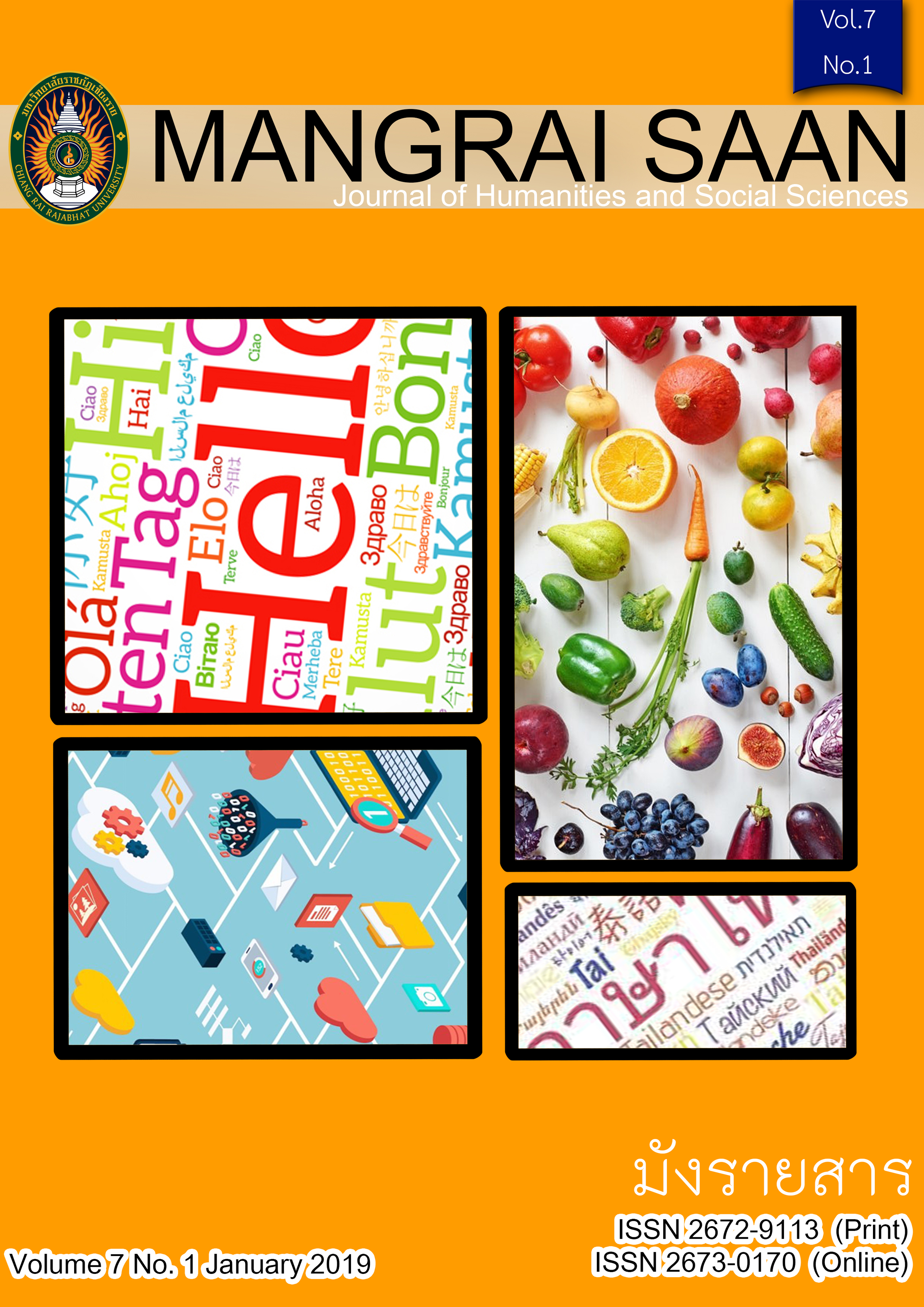การวิเคราะห์คำอุปลักษณ์ในหนังสือเรื่องสันติภาพทุกย่างก้าว: เส้นทางแห่งการตื่นรู้ในชีวิตประจำวันโดยท่าน ติช นัท ฮันห์
Main Article Content
บทคัดย่อ
The research purposed to analyze the metaphor used in the book “Peace Is Every Step: The Path of Mindfulness in Everyday Life”. The researcher applied Zhang and Wildemuth (2009) as a qualitative analysis theory; there are eight steps; (1) prepare the data, (2) define the unit of analysis, (3) develop categories and a coding, (4) test the coding scheme on a sample of text, (5) code all the text, (6) Assess coding, (7) Drawing conclusions from the coded data, and (8) Report methods and finding. Afterward, 25 types of metaphor presented by Adisorn Thammachai (2010) was employed as a model. On finding out metaphor, the whole chapters of the book were read carefully then grouping them into its appropriate metaphorical types. To proof the metaphorical accuracy and its types, the results were checked by two experts Steven Epstein and Stuart Weeks. Then, revising again and categorized into groups before describing in narrative style, summary, and reporting. The findings showed that 112 metaphors within 17 types were found. The top three metaphors are Simple or Tight metaphor (17.21%), Extended metaphor (12.29%), and Root metaphor (10.65%). The rarest metaphors are Dormant metaphor, Structural metaphor, and Dead metaphor (0.81% in each metaphor).
Article Details
เนื้อหาและข้อมูลในบทความที่ลงตีพิมพ์ในวารสารมังรายสาร ถือเป็นข้อคิดเห็นและความรับผิดชอบของผู้เขียนบทความโดยตรงซึ่งกองบรรณาธิการวารสาร ไม่จำเป็นต้องเห็นด้วย หรือร่วมรับผิดชอบใดๆ
บทความ ข้อมูล เนื้อหา รูปภาพ ฯลฯ ที่ได้รับการตีพิมพ์ในวารสารมังรายสาร ถือเป็นลิขสิทธิ์ของวารสารมังรายสาร หากบุคคลหรือหน่วยงานใดต้องการนำทั้งหมดหรือส่วนหนึ่งส่วนใดไปเผยแพร่ต่อเพื่อกระทำการใดๆ จะต้องได้รับอนุญาตเป็นลายลักอักษรณ์จากวารสารมังรายสารก่อนเท่านั้น
เอกสารอ้างอิง
Body Window Healing Body – Mind – Soul. (2018). https://www.bodywindow.com/what-is-a-metaphor.html.
BBC. (2006). [Online] Available: http://www.bbc.co.uk/religion/religions/buddhism/people/thichnhathanh.shtml
Cambridge Dictionary. (2018). [Online] Available: https://dictionary.cambridge.org/dictionary/english/metaphor
Elmes, D. (2013). The relationship between Language and Culture. [Online] Available: www2.lib.nifs-k.ac.jp/HPBU/annals/an46/46-11.pdf. National Institute of Fitness and Sports in Kanoya International Exchange and Language Education Center.
Hesselink K. (n.d.). (2017). [Online] Available: http://www.katinkahesselink.net/tibet/mindfulness-books.html
Kövecses, Z. (2010). Metaphor A Practical Introduction. Second Edition. Oxford University Press, Inc. 198 Madison Avenue, New York, New York 10016.
Lakoff, G. & Johnson, M. (1980). Conceptual Metaphor in Everyday Language,” The Journal of Philosophy, Vol. 77, Issue 8, pp. 453-486.
Lakoff, G. & Johnson, M. (1980). Metaphors We Live By. The University of Chicago Press. ISBN: 0-226-46801-1 (pbk. : alk. paper).
Pepper, S. C. (1942). World Hypotheses: Study in Evidence. California: University of California Press. Salisa, S. & Sudarak, K. (2018). The Comprehension of Metaphor in English Contemporary Songs by English as a Foreign Language Learners. 9th International Conference on Language, Innovation, Culture and Education. 24 - 25 February, 2018.
Tehseem, T. & Khan, A. B. (2015). Exploring The Use of Metaphors In Children Literature: A DISCURSIVE PERSPECTIVE. European Journal of English Language, Linguistics and Literature. Vol. 2 No. 2, ISSN 2059-2027.
Thammachai, A. (2010). An Analysis of Metaphors used in Harry Potter and The Deathly Hollows. Master Degree Thesis. Chiangrai Rajabhat University.
Worrapol, T. (2011). AN ANALYSIS OF METAPHORICAL EXPRESSION USED IN THE HURT LOCKER BY MARK BOAL. Master Thesis. Chiangrai Rajabhat University. Zhang, Y. & Wildemuth, B. M. (2009). Qualitative Analysis of Content. [Online]Available: http://old-classes.design4complexity.com/7702-S11/reading/content-analysis.pdf


